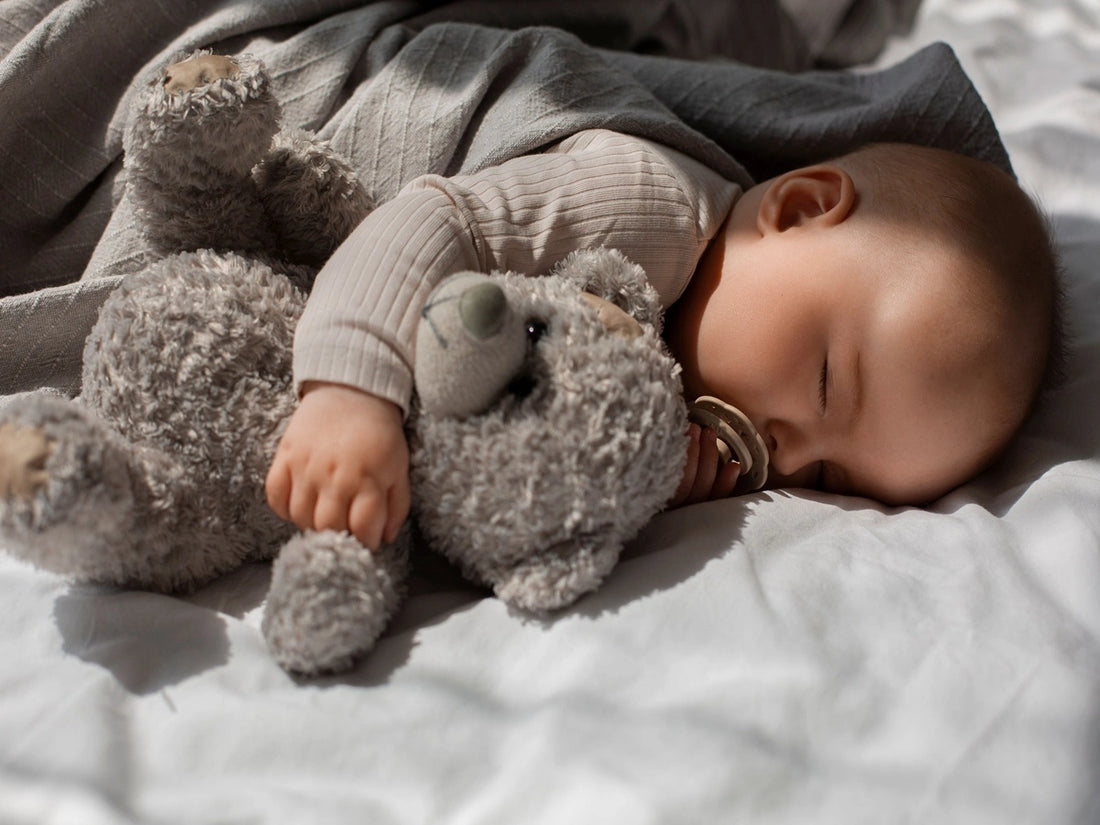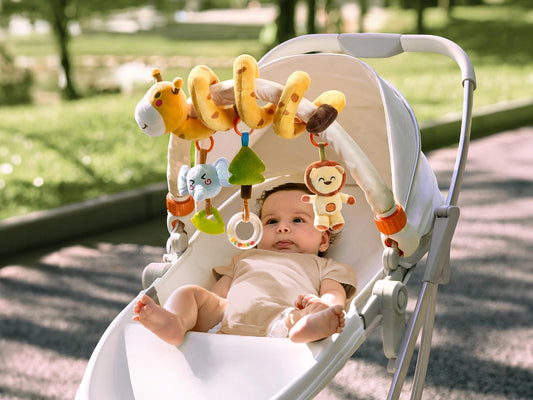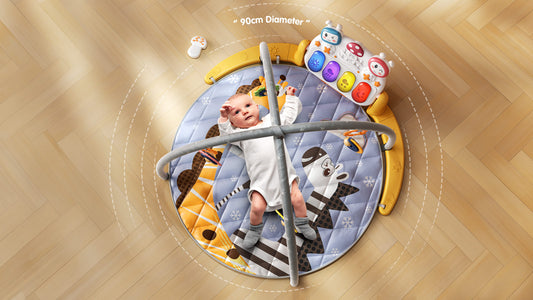Baby Tremors and Shakes: A New Mom's Guide to Baby Movements

As a new mom, you may care too much about your newborn's every move, breath, and sound. The world your baby grows in is not only a world full of wonders, but it can also be a worrying world, especially if you notice your baby's tremors or shaking. The tremors and shaking may shock you at first, but they are actually a normal part of baby's development. Today’s guide will equip you with a comprehensive understanding of the common causes of Baby Shakes and Tremors.
What do baby shakes look like?
Infantile tremor, also called neonatal tremor, can manifest in many ways. Tremors usually appear as small, rhythmic or non-rhythmic movements of different parts of the baby's body. For example, the baby's chin is shaking, the baby's limbs are shaking, or the baby's fingers or toes are twitching.
Is it normal for babies to tremble?
A newborn baby's nervous system is not yet fully developed. As a result, his movements may appear unexpectedly twitchy. Usually, these movements are harmless and will decrease as your baby grows. Therefore, tremors are often a normal part of a baby's development.
Why does my baby get random shivers?
1. Fine motor skill development
In fact, babies begin developing the fine motor skills they need from birth. During the first 28 days of life, you may observe a slight shaking of the baby's head or limbs. This is part of their natural learning process as they prepare for future milestones, such as lifting their head while lying on their tummy.
As your baby grows, the tremors may develop into smaller twitches of the wrists and fingers. This is an inspiring sign. Because this means that your baby is working on the finer details of motor control. This will eventually lead to grasping and manipulating small objects.
Baby Development Tips: You can prepare some toys for babies at this period that are easy for babies to grasp, such as hand grasping balls, teething toys that are easy for babies to grasp, etc.
2. Immaturity of the nervous system
The newborn's nervous system is developing. At this point, their brain is engaged in creating pathways to send signals to the body, which can lead to the unstable movements you observe. This is especially noticeable in babie's first two months of life. As these pathways mature, your baby's movements will become smoother and more coordinated.
3. Startle reflex
One common movement in newborns is the startle reflex, also called the Moreau reflex. This is an unconscious reaction. For example, your baby may suddenly extend his arms and legs, flap his fingers, or arch his back. These reactions are in response to loud noises or other sudden changes in the surrounding environment. Usually, this reflex is a normal part of a baby's development and may disappear between 3 and 6 months of age.
4. Caffeine and Breastfeeding
If you are a breastfeeding mother and enjoy caffeinated beverages, please be aware that caffeine can be transferred to your baby through breast milk. While small amounts are usually nothing to worry about, consuming large amounts of caffeine can cause increased tremors and tremors in babies. Therefore, it is best for mothers to limit their caffeine intake to ensure that their babies remain calm and do not tremble.
5. Sleep transition
Shaking and jerking movements are also common when your baby falls asleep or wakes up. This phenomenon, called sleep myoclonus, can be alarming but is usually benign. These vibrations should not be cause for concern unless accompanied by other unusual symptoms or behavior.
Baby sleep tips: Of course, in order to make your baby fall asleep more peacefully, you can play sleep soothing toys for your baby before falling asleep to create a comfortable and safe sleeping environment for your baby.
6. Diaper dissatisfaction and hunger signals
Some babies express their distaste for diaper changes by rocking. Likewise, if your baby starts moving their arms and legs more during a feed, this may be a sign that they're hungry. Crying can also cause trembling and is another sign of hunger.
7. Recognize epileptic seizures
While most babies’ tremors and shakes is benign, it's important to be alert for signs of a seizure. Neonatal seizures may manifest as abnormal movements inappropriate for their age, repeated seizures with the same characteristics, and rhythmic shaking that may occur on one side of the body or be symmetrical. If you observe such symptoms or notice changes in your baby's facial expression, breathing, or heart rate, seek immediate medical attention.
8. Recognize shivering caused by fever
Shivering can also be a sign of fever. Shivering movements increase body temperature as the body attempts to prevent heat loss. At this time, the child will also experience sweating and blushing. Children with fever should not be underdressed or overly wrapped. If your child's symptoms do not abated after a period of time after having fever-reducing medication, you had better see a doctor immediately.
How do I stop my child from shivering?
During infancy, tremors are usually a manifestation of the baby's physical development and do not require intervention to stop. However, if you eager to reduce the child's discomfort, here are some gentle approaches you can take:
Warm Hugs: If the shivering seems to be caused by the cold, please wrap your baby in a warm blanket or, better yet, hold them in your arms. After all, the warmth of a parent's body, like a fireplace, will provide babies with comfort and stabilize their mood.
Soothing swaddles: Like a greenhouse, swaddling can give babies a sense of security and warmth, calming unconscious tremors, especially those caused by the startle reflex.
Gently Rock: Gently rock your child to mimic the rise and fall of ocean tides. This movement is the most reassuring and may help relax muscles that are shaking due to anxiety or restless feelings while falling asleep.
Feeding: If the shivering is caused by extreme hunger, prompt nutrition in the form of breast milk or formula may calm the shivering.
Calm environment: Make sure the atmosphere around your baby is peaceful, at a comfortable temperature, with dim lights and so quiet that it can rival the silence of a moonlit clearing.
Consult a doctor: If tremors persist for no apparent reason, do not stop despite comfort measures, or are accompanied by other signs of distress, seek prompt advice from your doctor.
Usually, shaking, trembling, and twitching are common phenomena in the newborn world, and they signify the baby's growth. As you get more accustomed to your baby's movements, you'll be able to differentiate between normal movements and flutters that may require your doctor's attention. Therefore, mothers should not be too nervous when encountering trembling babies. But always trust your instincts - if something doesn't seem right, it's best to seek professional advice.





1 comment